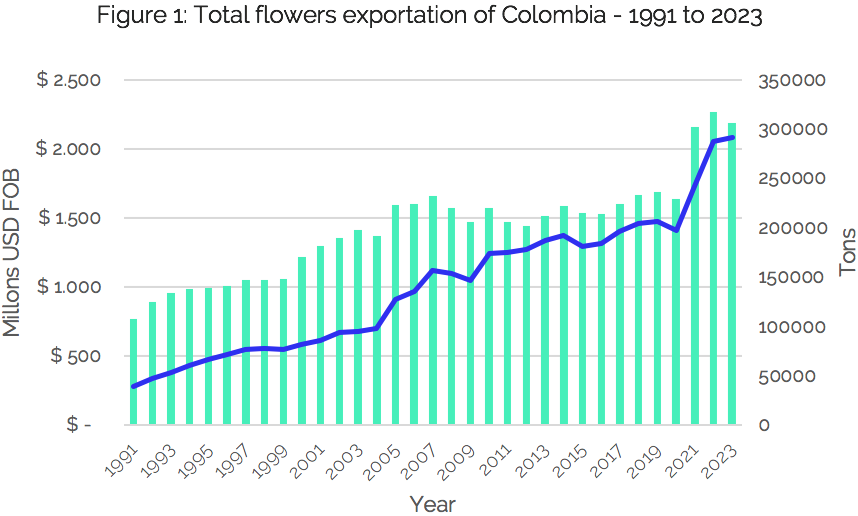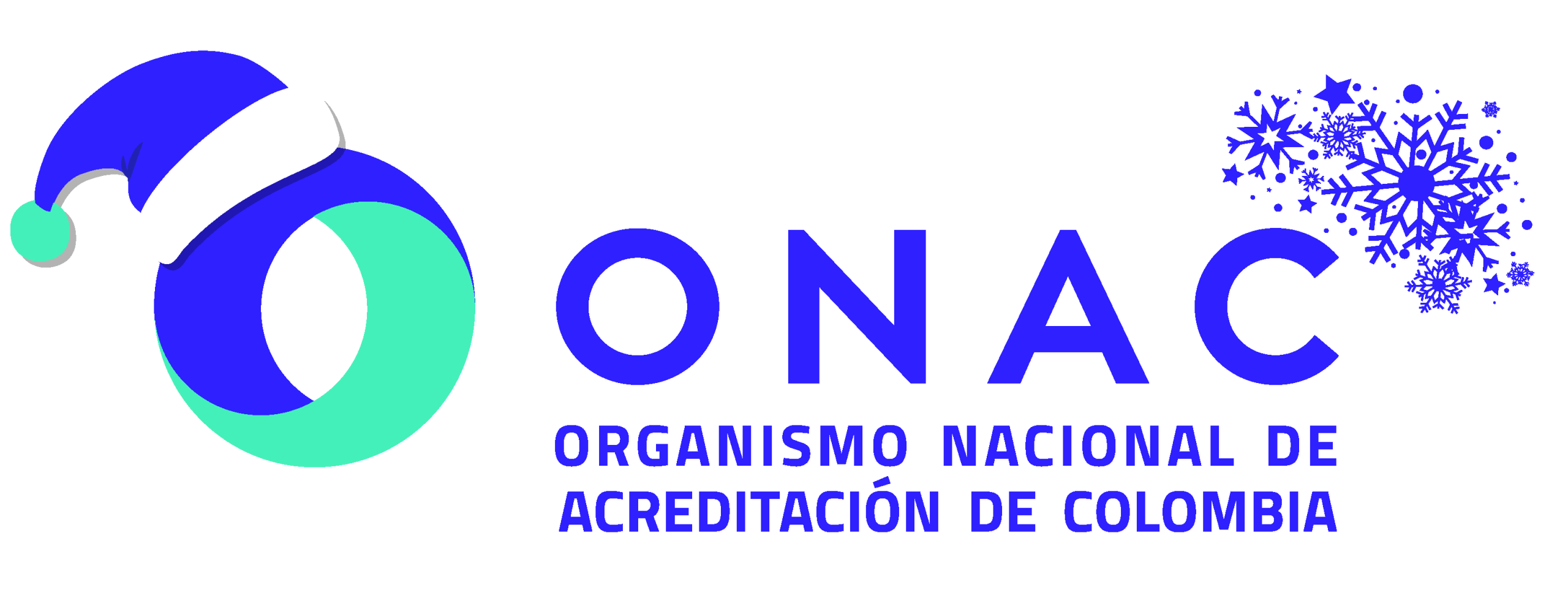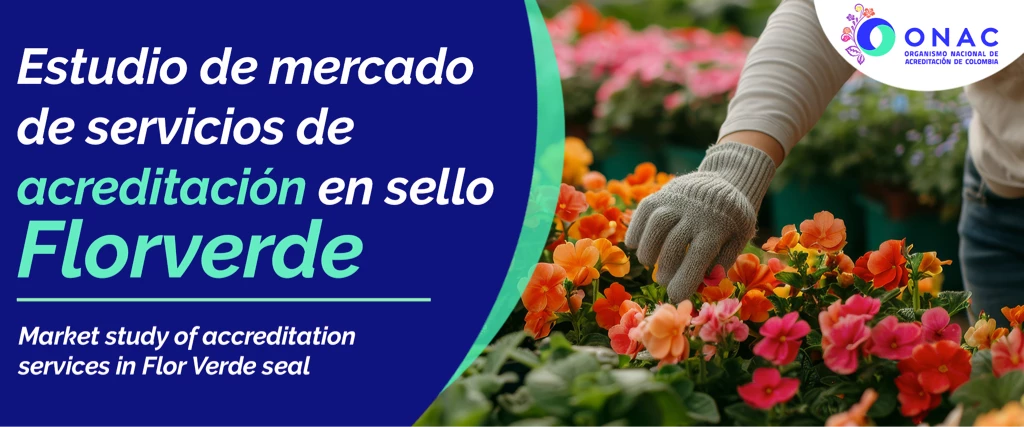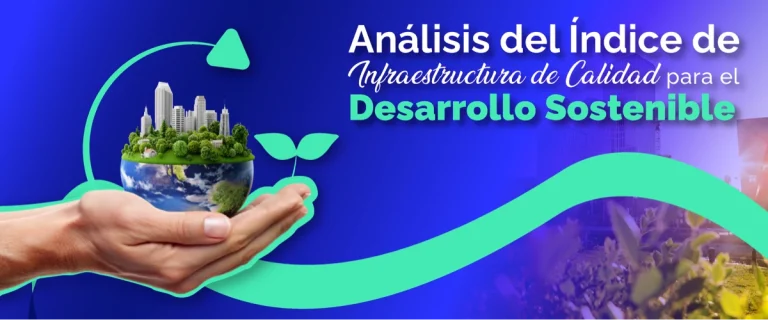Research coordination for economic and social studies related to quality infrastructure.
Organismo Nacional de Acreditación de Colombia – ONAC
Abstract
The Colombian flower sector plays a key role in the country’s economy, society and environment. This study evaluates the viability of implementing accreditation services based on the Florverde standard, analyzing the economic context and potential interested clients. The current state of the sector, its economic performance and international competitiveness are examined, as well as the associated certification market is analyzed, highlighting the importance of Florverde certification.
Objective
The objective of this study is to provide relevant data to make informed decisions about the implementation of the accreditation service under the Florverde seal, contributing to the development of a crucial sector for the national economy and strengthening quality infrastructure services in the Colombian flower sector.
Scope
This document presents the particularities of the flower sector in Colombia, a general overview of its formation and the certification market in the Florverde seal, with the related scope offered by ONAC. Based on the above, it presents some conclusions derived from the study.
1. Introduction
The floriculture sector in Colombia plays a key role in both economic and social and environmental terms. It contributes significantly to job creation, especially in rural regions, and contributes to the country’s exports. Flower farming not only drives economic growth, but also projects a positive image of the country in international markets, consolidating itself as one of the leading players in the world flower trade. In this context, the purpose of this study is to evaluate the feasibility and potential of implementing accreditation services in the Florverde seal, analyzing the economic context of the sector, as well as the potential market for the seal and the potential accreditation market.
Initially, it examines the current state of the floriculture sector in Colombia, including its economic performance, the level of exports, international competition, flowers export destinations and other relevant economic variables. Then, an analysis of the certification market associated with the floriculture sector is carried out, focusing on the Florverde seal. The importance of this certification, its criteria and objectives, as well as related scope offered by ONAC are discussed.
The objective of this study is to provide relevant data for making informed decisions on the implementation of the Florverde standard accreditation service, contributing to the development of a sector crucial to the national economy and strengthening the quality infrastructure in the Colombian florist sector.
2. Colombia’s floriculture sector context
In the year 2023, flowers occupied sixth place among the most exported products of the country with a share of 4.2% of the total foreign sales of Colombia. The floriculture sector has shown in the year 2023 an increase in the flowers exported, reaching a total of 2.080 million dollars and 310.000 tons, with a positive variation of 1% in the total exported but a reduction of 3.2% of the volume exported compared to 2022. Figure 1 shows the behavior of flower exports in the period 1991-2023, where there is a growing trajectory of exports over the last 32 years. According to Asocolflores, by 2023 10,500 hectares were produced, where rose, hortensia and clove were the most cultivated flowers. 1
Figure 1: Total flowers exportation of Colombia – 1991 to 2023

Source: MinCIT – DANE – Ceniflores. Own estimates, Research coordination for economic and social studies related to quality infrastructure.
According to data from the World Bank, represented in Figure 2, for the year 2021 the Netherlands led the list of largest countries exporting flowers, with a value of $5.353 million exported, followed by Colombia with $1,727 million, which suggests a dominant position in the global flower market. This contrast can be attributed to a combination of factors, such as production capacity, quality of flowers, logistics infrastructure and demand in international markets.
In addition, it highlights the significant role of Latin American countries such as Colombia and Ecuador, which have auspicious climate conditions for the cultivation of flowers and, along with their proximity to the United States, have consolidated their position of relevance for this market in the region. Kenya can be highlighted, which, with its proximity to the European, Middle East and Asian markets, also allows it to participate in the international florist market.
Figure 2: Top world flowers exporters -year 2021
Source: World Bank. Own estimates, Research coordination for economic and social studies related to quality infrastructure.
The floriculture sector is a vital pillar in employment generation. By 2023, this industry contributed to the creation of around 200,000 jobs, of which 110,000 were directly employed, while the remaining 90,000 were attributed to indirect jobs. It is remarkable that, of the total staff, a significant 60% were women. This highlights the importance and empowerment of women in the field of floriculture, highlighting their essential contribution to the economic and social development of the sector.
It is interesting to observe the behavior of flower exports and the nominal exchange rate between the US dollar and the Colombian peso, as shown in Figure 3. Both series show a growing trend over time, with a marked peak in the exchange rate in 2003 and significant increases in recent years.
There is an apparent positive correlation between exports and the nominal exchange rate, especially starting in 2015. During periods when the exchange rate increases, an increase in USD exports is also observed. This could be because a higher exchange rate makes exported products more competitive in the international market as they become cheaper for foreign buyers, which can boost exports.
However, it is crucial to note that this correlation does not necessarily imply a proven causal relationship. Other factors, such as global demand, product prices, economic policies and international market conditions, also play an important role in export behavior. Therefore, although the exchange rate can influence exports, it is only one of many factors that must be considered to fully understand this dynamic.
Figure 3; Time series of flower exports and USD/COP exchange rate: 1991 – 2023

Source: MinCIT – DANE – Ceniflores. Own estimates, Research coordination for economic and social studies related to quality infrastructure
Moreover, one variable that allows to know the economic dynamism of any sector is the total of credits disbursed to finance the activities of companies. Thus, Figure 4 displays the evolution of the appropriations requested to Finagro and their total value for projects related to the floriculture sector in the period 2011-2023. In the year 2023, the application for appropriations reached a total of 2,291, amounting to a value of 799 billion pesos. A growing trend from 2016 is highlighted, which would be closely linked to the expansion of the sector in terms of exports. This correlation could be attributed to the fact that an increase in exports would motivate florists to seek higher incomes in foreign currency, which in turn would drive more investment in infrastructure and projects aimed at increasing the productivity of the sector.
It should be highlighted the request for 2,190 appropriations in 2020, a significantly higher number than in previous years. This increase can be explained to an increased need for liquidity for the sector, owing to the effects of the COVID-19 pandemic, which had a significant impact on the global economy. In 2020, an agreement was signed with the contribution of the Ministry of Agriculture and Rural Development of $700 million, in order to give continuity through the Colombian Mercantil Exchange, to the strategy of promotion and support to the marketing of the sector both in the domestic and international market. 2
Figure 4: Credit behavior of projects related to the flower sector

Source: Finagro. Own estimates, Research coordination for economic and social studies related to quality infrastructure
.
Another way to see the growth of the flower sector in recent years is by observing the behavior of the hectares cultivated and dedicated to flower production. Figure 5 illustrates a constant growth in the extension of land dedicated to cultivation in the Colombian flower sector, reaching a maximum of around 10.000 hectares by 2023, with the exception of a marked decrease in 2020. This gradual increase suggests a greater demand for productive resources and reflects the dynamism of this sector. The drop in 2020 can be attributed to the COVID-19 pandemic. However, the general growth highlights the attractiveness and strength of the flower industry in Colombia, which continues to expand despite the current challenges.
Figure 5: Total hectares cultivated by the flower sector
Source: ICA-Minambiente. Starting 2020, own estimates, Research coordination for economic and social studies related to quality infrastructure.
Regarding the analysis of export destinations, in 2023, the United States was the largest buyer of Colombian flowers with 79.5%, as seen in Figure 6, followed by countries such as Canada, the United Kingdom, the Netherlands, Japan, Spain and Poland, with less than 4%. According to Procolombia, it is during the Valentine’s Day and Mother’s Day season that flowers in the sector.3 are most in demand. Other important dates are Thanksgiving Day and Christmas season.
Figure 6: Destination countries for Colombian flower exports – 2023

Source: DIAN – MinCIT. Own estimates, Research coordination for economic and social studies related to quality infrastructure.
In the Colombian context, it is relevant to understand the regional dynamics of the flower sector, that is, to determine the departments that concentrate the volume of exports. Figure 7 shows the export flow of the 3 departments that export the most flowers to the destination countries. The departments that exported the most flowers in 2023 were Cundinamarca and Bogotá (71%), followed by Antioquia (27%), with 1% dispersed in departments in the southwest of the country. The fact that the United States absorbs the supply of exported flowers stands out, followed by Canada, Japan, the United Kingdom and the Netherlands, the latter also a flower producer. The largest means of transportation used for export was air, with a total of 235,540 tons, most likely due to the proximity to the United States and the demand for fresh product, especially during the Valentine’s season.
Figure 7. Distribution of origin departments and destination countries for flower exports – 2023

Source: DIAN – MinCIT. Own estimates, Research coordination for economic and social studies related to quality infrastructure
Annex Table A1 shows the participation of various types of flowers in total flower exports in Colombia from 2014 to 2023. Fresh cut flowers for bouquets have seen a notable increase in their participation, increasing from 37,71% in 2014 to 48,01% in 2023. This growth has been mainly driven by an increase in the export of flowers such as hydrangeas and lilies, which have increased their market share significantly. However, other fresh flowers such as roses and carnations, which initially had a large share, have seen a decrease in their contribution to total exports, going from 27,04% to 18,06% and from 16,45% to 13,7%, respectively.
In the segment of dried, bleached, dyed, etc. flowers, moderate growth is observed, increasing slightly from 0.88% in 2014 to 0.92% in 2023. Minor categories, such as asters and gerberas, have seen a decrease in their participation, while orchids have maintained an almost insignificant participation in exports. The general trend indicates a strengthening in flower exports, with a clear preference for fresh cut flowers, indicating a greater share in the international market, although some traditional categories have seen a decrease in their market share.
3. Analysis of the Florverde seal certification market
Relevance of certification
Florverde Sustainable Flowers is a private organization dedicated to the certification of a social and environmental standard for the flower sector. Founded by Asocolflores in 1996, it began as a social and environmental floriculture program. In 2002 it became a second-party verifier and the following year; it implemented elements of ISO 14000. In 2005 it included elements of a certification and a standard. In 2013 they changed the brand to Florverde Sustainable Flowers and in 2019 they sealed alliances and agreements with different entities for the recognition and improvement of standards..
The main objectives of Florverde seal are to promote sustainable agricultural practices within the flower industry and encourage sustainable development in the areas where flowers are grown. Some of the specific objectives are:
- Promote environmental conservation: The Florverde seal seeks to reduce the negative impact of flower production on the environment through sustainable agricultural practices that minimize the use of agrochemicals, protect biodiversity and promote the responsible management of natural resources.
- Improve working conditions: Another important objective is to guarantee fair and safe working conditions for workers in the flower industry. This involves respecting labor rights, providing a fair wage, ensuring a safe work environment, and promoting worker well-being and training.
- Contribute to social and economic development: Florverde seeks to be an engine of development in the communities where flowers are grown, through the generation of decent employment, support for education and health initiatives, and the promotion of community participation and local development sustainable.
- Guarantee the quality and safety of products: In addition to environmental and social aspects, the Florverde seal also focuses on the quality and safety of products. This implies compliance with quality standards in the production of flowers and ensuring the safety of the products for final consumers.
The criteria and standards that companies must meet to obtain Florverde certification cover various areas, including environmental, social and product quality aspects. Some of the general criteria that are usually part of this certification are:
- Use of agrochemicals: Companies must implement agricultural practices that minimize the use of pesticides and chemical fertilizers, prioritizing organic and biological methods.
- Water management: Measures must be implemented to conserve and efficiently use water, including efficient irrigation systems and water conservation technologies.
- Conservation of biodiversity: The protection and conservation of natural ecosystems and biodiversity in flower production areas is required.
- Waste management: Companies must implement appropriate systems for the management of agricultural and other waste, minimizing waste generation and promoting recycling and reuse.
- Working conditions: Compliance with international labor standards is required, including respect for human rights, non-discrimination, freedom of association and the payment of fair wages.
- Occupational health and safety: Measures must be implemented to ensure a safe and healthy work environment for employees, including occupational safety training and access to appropriate protective equipment.
- Community development: Companies must contribute to the sustainable development of local communities, supporting education, health, infrastructure and economic development initiatives.
- Product quality: Compliance with quality standards is required for the flowers produced, ensuring that they meet customer requirements and are safe for consumption.
To the date, Florverde claims to have certified 4,682 hectares from 119 farms in Colombia and Ecuador for a total of 2.2 billion certified stems from these countries. . They also have approval with the standards of the Rainforest Alliance and Global Social Compliance Programme. . The final market for Florverde certified flowers is in retailers and large stores in the United States such as Kroger, Wal-Mart and Costco, as well as wholesale sales.
4. Potential accreditation market
Being certified with the Florverde seal would represent an investment in sustainability and corporate social responsibility for companies in the flower industry. Obtaining this certification would demonstrate a firm commitment to sustainable agricultural practices, respect for the environment and the conservation of natural resources. Furthermore, compliance with Florverde standards not only guarantees the quality and safety of products for consumers, but also promotes fair and safe working conditions for workers, which can improve the company’s reputation and its access to markets. demanding people who value sustainability and business ethics.
Additionally, ONAC offers accreditation services aimed at promoting good agricultural practices, focused on three areas of production: Crops, Animal Production and Aquaculture, structured under 16 standards., all this under the CPR scheme, in the scope of agriculture, forestry and fishing.
5. Conclusion
In this study, an analysis of the potential accreditation in the regulations of the Florverde seal was carried out, which includes a characterization of the flower sector in Colombia, its behavior and economic trends. Considering the importance of the flower sector in Colombia and the demand for flowers in the world, the need for the participation of Quality Infrastructure in the sector is understandable.
In summary, there are opportunities in the market for the adoption of the Florverde seal, due to the expansion of the foreign market and the potential of flower growing companies not yet certified, contributing to best practices and an increase in the quality of the product sold in the foreign market. On the part of the CABs, there is already an established market that offers the seal, with potential CABs that could seek accreditation in order to enter this certification market, where ONAC seeks to be a solid ally for the flower sector, relevant to the national economy.
6. References
- Agronegocios. (2024). Balance 2023 del sector floricultor. Recuperado de https://www.agronegocios.co/agricultura/balance-2023-del-sector-floricultor-3777763
- Asocolflores. (2023). Florverde Sustainable Flowers y Flor Ecuador Certified: una alianza ganadora que busca fortalecer el sector floricultor latinoamericano. Recuperado de https://asocolflores.org/es/florverde-sustainable-flowers-y-flor-ecuador-certified-una-alianza-ganadora-que-busca-fortalecer-el-sector-floricultor-latinoamericano/
- Banco Mundial. (s.f.). Trade data: Colombia exports of flowers. Recuperado de https://wits.worldbank.org/…
- CENIFLORES. (s.f.). Sector floricultor. Recuperado de https://ceniflores.org/sector-floricultor/
- Florverde. (s.f.). About us: Who are we? Recuperado de https://www.florverde.org/en/about-us-who-are-we/#history
- Florverde. (s.f.). How to get FSF recognition with others. Recuperado de https://www.florverde.org/en/how-to-get-fsf-recognition-with-others/
- Instituto Colombiano Agropecuario (ICA). (2024). ICA: Colombia exporta flores para San Valentín 2024. Recuperado de https://www.ica.gov.co/noticias/ica-colombia-exporta-flores-san-valentin-2024
- Ministerio de Comercio, Industria y Turismo (MinCIT). (2024). Comercio exterior de Colombia. Recuperado de https://www.mincit.gov.co/estudios-economicos/estadisticas-e-informes/comercio-exterior-de-colombia
- ONAC. (s.f.). Organismos de certificación de producto. Recuperado de https://onac.org.co/servicios/organismos-de-certificacion-de-producto/
- ProColombia. (2025). Gracias al trabajo de ProColombia con empresarios, las flores colombianas son protagonistas del día. Recuperado de https://prensa.procolombia.co/gracias-al-trabajo-de-procolombia-con-empresarios-las-flores-colombianas-son-protagonistas-del-dia
Anexos
Table A1: Participation of Various Types of Flowers in Colombia’s Total Exports (2014-2023)
Description | 2014 | 2015 | 2016 | 2017 | 2018 | 2019 | 2020 | 2021 | 2022 | 2023 |
Fresh cut flowers for bouquets | 0,94% | 1,38% | 1,46% | 1,37% | 1,31% | 1,44% | 1,90% | 1,76% | 1,72% | 2,01% |
Roses | 0,68% | 0,88% | 0,96% | 0,81% | 0,80% | 0,84% | 1,04% | 0,89% | 0,69% | 0,75% |
Carnations | 0,41% | 0,59% | 0,67% | 0,59% | 0,54% | 0,60% | 0,66% | 0,62% | 0,48% | 0,57% |
Pompon | 0,21% | 0,31% | 0,35% | 0,30% | 0,28% | 0,29% | 0,32% | 0,31% | 0,24% | 0,27% |
Hydrangeas | – | 0,05% | 0,23% | 0,20% | 0,18% | 0,18% | 0,17% | 0,19% | 0,16% | 0,19% |
Astromelias | 0,14% | 0,22% | 0,25% | 0,21% | 0,19% | 0,20% | 0,23% | 0,19% | 0,14% | 0,17% |
Chrysanthemums | 0,07% | 0,10% | 0,11% | 0,10% | 0,09% | 0,09% | 0,09% | 0,09% | 0,07% | 0,09% |
Daylilies | – | 0,00% | 0,02% | 0,02% | 0,03% | 0,02% | 0,03% | 0,04% | 0,04% | 0,05% |
Dried flowers, bleached, dyed, etc. | 0,02% | 0,03% | 0,03% | 0,03% | 0,03% | 0,04% | 0,05% | 0,05% | 0,04% | 0,04% |
Aster | 0,02% | 0,02% | 0,03% | 0,02% | 0,02% | 0,02% | 0,02% | 0,02% | 0,01% | 0,02% |
Gerberas | 0,01% | 0,01% | 0,01% | 0,01% | 0,01% | 0,01% | 0,02% | 0,01% | 0,01% | 0,01% |
Gypsophilias | 0,01% | 0,01% | 0,01% | 0,01% | 0,01% | 0,01% | 0,01% | 0,01% | 0,01% | 0,01% |
Orchids | 0,00% | 0,00% | 0,00% | 0,00% | 0,00% | 0,00% | 0,00% | 0,00% | 0,00% | 0,00% |
Source: DIAN – DANE. Own estimates, Research coordination for economic and social studies related to quality infrastructure
.
-
Informe Asocolflores 2023. Available in: https://drive.google.com/file/d/1RIj7S4yVqhn9Ka92G9HZlcQSU9sdyL1O/view
-
Ministerio de Agricultura y Desarrollo Rural. Available in: https://sioc.minagricultura.gov.co/Flores/Documentos/2020-12-31%20Cifras%20Sectoriales.pdf
-
Procolombia. Available in: https://prensa.procolombia.co/gracias-al-trabajo-de-procolombia-con-empresarios-las-flores-colombianas-son-protagonistas-del-dia
-
https://www.ica.gov.co/noticias/ica-colombia-exporta-flores-san-valentin-2024
-
https://www.agronegocios.co/agricultura/balance-2023-del-sector-floricultor-3777763
-
https://www.florverde.org/wp-content/uploads/2024/02/Brochure-Florverde-2024.pdf
-
https://www.florverde.org/en/how-to-get-fsf-recognition-with-others/
-
https://onac.org.co/servicios/organismos-de-certificacion-de-producto/





